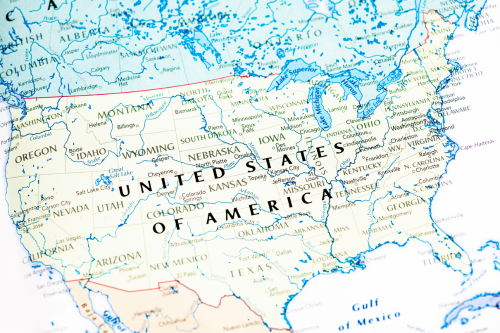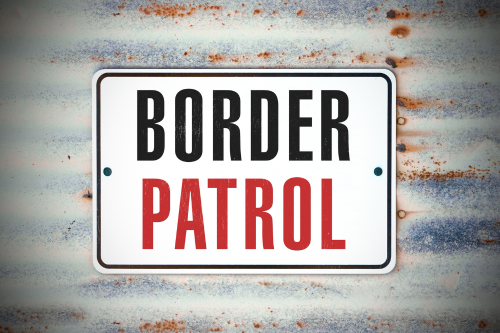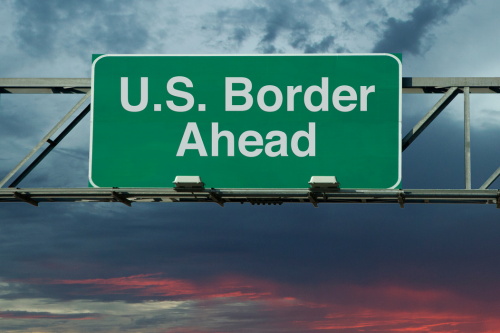Border patrol checkpoints are common near the U.S.-Mexico and U.S.-Canada borders. Agents stop and question travelers, but many people don’t know their rights in these situations.
The government has extra powers within 100 miles of any U.S. border, but the United States Fourth Amendment still protects people from unfair searches. Knowing your rights can help you handle these stops with confidence.

What Are Border Control Checkpoints?
Border patrol checkpoints are fixed locations where U.S. Customs and Border Protection (CBP) agents stop vehicles to check immigration status. These checkpoints are typically located near the U.S. border but can also be found up to 100 miles inland. They differ from ports of entry, where travelers legally enter the country.
Travelers frequently search for a list of border patrol checkpoints to plan their routes. While no official government list exists, many online sources track locations based on reports from drivers. Common areas for checkpoints include Texas, Arizona, California, and New Mexico.
Do Border Patrol Checkpoints Break Your Rights?
The Fourth Amendment protects people from unfair searches. However, the government allows Border Patrol to stop people without a warrant within 100 miles of a U.S. border.
This area, called the "border zone," includes major cities like New York, Los Angeles, and Houston. Even here, agents must follow the law and cannot stop people without a valid reason or treat them unfairly.
Some travelers look for border patrol checkpoints to avoid when planning road trips. While avoiding a checkpoint is legal, suspicious behavior—such as making an obvious U-turn—may give agents a reason to stop you.
Tips for Travelers:
✅ Plan Ahead: Know where checkpoints might be on your route.
✅ Stay Informed: Some checkpoints move, so check for updates.
✅ Know Your Rights: Learn what law enforcement can and can’t do.
The Border Crisis: More Than Just Numbers
When people hear about the border crisis, they often think of numbers—how many people cross, how many get caught, and how many get sent back. But behind every number is a person with a story.
The People Behind the Border Crisis
Many immigrants leave their homes because they have no choice. Some are running from violence, others can’t find work, and many just want a safe place for their kids. Crossing the border is dangerous. People face extreme heat, rough terrain, and even smugglers who take advantage of them.
Why Current Solutions Aren’t Working
The U.S. spends a lot of money on border security, but the problem isn’t going away. Why? Because walls and stricter rules don’t stop people who are desperate. As long as their home countries are unsafe or unstable, people will keep trying to come. A real fix means better legal paths to come to the U.S., more help for struggling countries, and fairer immigration rules.
The Truth About the Border Crisis
Some people think the border is wide open, but that’s not true. The U.S. already has strict immigration rules. Others believe most immigrants are criminals, but studies show they commit fewer crimes than U.S. citizens. Misleading information about immigrant crime causes fear and stops real solutions.
To fix the border crisis, we need to see the people behind it. Real change means balancing security with fairness and compassion.
Can Immigration Officers Stop You Miles from the Border?
Yes, immigration officials can stop individuals in places wholly inside the U.S., but only under specific conditions. Border patrol checkpoints operate at permanent and temporary locations, often set up on highways, bus stations, and train stations.
These stops must be brief and focused on immigration status. Agents do not have unlimited authority and must have reasonable suspicion of a violation to conduct further questioning or searches.

What Does ‘Reasonable Distance’ Really Mean?
Federal law allows border patrol checkpoints to operate within 100 miles of any U.S. land or coastal border. This "reasonable distance" gives immigration officials the ability to conduct routine checks, but it does not mean they can stop or search individuals without cause. Courts have ruled that prolonged detention or searches without consent or probable cause violate constitutional rights.
What Border Officials Can and Can’t Do
Yes, immigration officials do not have unchecked authority. There are several important limitations:
🚨 Checkpoints: They can ask about citizenship but can’t search without a reason.
🚌 Buses & Trains: They can ask about immigration status but can’t force answers without cause.
✈️ Airports: Domestic travelers don’t have to answer immigration questions.
🚗 Roving Patrols: Agents can stop cars near the border only with a reason.
Where Can U.S. Customs and Border Patrol Stop You?
Border patrol checkpoints can be intimidating, but it’s essential to understand how they function:
🔹 Permanent Checkpoints: Found on major highways. Agents ask about immigration status.
🔹 Temporary Checkpoints: Appear randomly but work like permanent ones.
🔹 Public Transportation: Agents check buses and trains and may question passengers.
🔹 Airports: International travelers must go through customs, but domestic travelers don’t have to answer questions.
🔹 Roving Patrols: Agents patrol highways near the border and stop cars only if they suspect an immigration violation.
Permanent Border Patrol Checkpoints
CBP operates 328 entry points across the U.S. Use this Border Patrol Checkpoints map to find air, sea, and land checkpoints.
Common areas for checkpoints include Texas, Arizona, California, and New Mexico:
Most Active List Border Patrol Checkpoints in Texas
Texas has several well-known immigration checkpoints:
📍 I-35 Checkpoint (Laredo): One of the busiest in the country.
📍 I-10 Checkpoint (Sierra Blanca): Frequently stops travelers heading west.
📍US-281 Checkpoint (Falfurrias): A major checkpoint near the border.
📍I-20 Checkpoint (Midland-Odessa area): Less known but still active.
List of Busiest Border Patrol Checkpoints in California
California has the following border patrol checkpoints along major highways:
📍 I-5 San Clemente Checkpoint: North of San Diego, often has traffic delays.
📍 I-8 Checkpoint: Near Pine Valley, with frequent inspections.
Busiest Border Patrol Checkpoints in Arizona
Arizona has multiple border patrol checkpoints along major highways:
📍 I-19 Checkpoint (Amado): A major checkpoint between Nogales and Tucson.
📍 SR-86 Checkpoint (Three Points): Often used to stop westbound traffic.
📍 I-8 Checkpoint (Yuma area): Near a popular desert crossing route.
The Busiest Border Patrol Checkpoints in New Mexico
📍 I-25 Checkpoint: North of Las Cruces, travelers report thorough inspections.
How to Protect Your Rights at Border Patrol Checkpoints
It’s of the utmost importance to know your rights as an immigrant. If you encounter immigration officials at a checkpoint or during a stop, remember:
🚦 Stay Calm: Don’t argue or resist, but stand firm on your rights.
🚦 Ask if You’re Free to Leave: If you’re not detained, you can leave.
🚦 Don’t Agree to a Search: Officers need your permission or probable cause to search you.
🚦 Stay Silent: You are not required to answer questions about your immigration status.
🚦 Take Notes: If possible, write down or record the officer’s name and badge number.

Need Help Understanding BPC? Contact Us Today!
Border patrol checkpoints are a reality for many travelers within the 100-mile border zone. While agents have some authority to conduct stops, they must still respect constitutional rights. Knowing how to protect yourself can make a difference in these situations.
If you believe your rights have been violated, our experienced immigration experts can help. Contact a local Los Angeles immigration lawyer today for a consultation to get guidance.
Border Patrol Checkpoints FAQs
Continue reading to find out more about U.S. Customs and Border Patrol checkpoints that are important to know.
1. Do you have to show ID at border patrol checkpoints?
U.S. citizens are not required to carry identification at immigration checkpoints. However, refusing to answer questions may result in delays or additional questioning. Non-citizens should carry proof of legal status, such as a visa or green card.
2. Can Border Patrol pull you over?
Yes, but only under certain conditions. Border Patrol can pull you over if they have reasonable suspicion of an immigration violation or criminal activity. They cannot stop you without a valid reason outside of a checkpoint.
3. How long can Border Patrol detain you?
Border Patrol can detain individuals for a reasonable amount of time to determine immigration status. If you are held for more than 20-30 minutes, you may ask if you are free to go. If detained for hours without cause, your rights may be violated.
4. What about Border Patrol checkpoints in Mexico?
Mexico has its own immigration checkpoints operated by Instituto Nacional de Migración (INM). These are found on highways and near major cities. U.S. travelers may be asked for passports and visas when passing through.
5. Can Border Patrol search my car?
At immigration checkpoints, Border Patrol can ask about your status, but they cannot search your vehicle unless:
- You give consent.
- They have probable cause.
- They see something illegal in plain view.
6. Can you refuse to answer questions at a checkpoint?
Yes. You have the right to remain silent at Border Patrol checkpoints. However, refusing to answer basic questions may cause delays or further questioning.
7. How do I find a list of border patrol checkpoints?
It’s best to consult the United States Customs and Border Patrol website for the latest checkpoint updates.
Posted in: Blog
